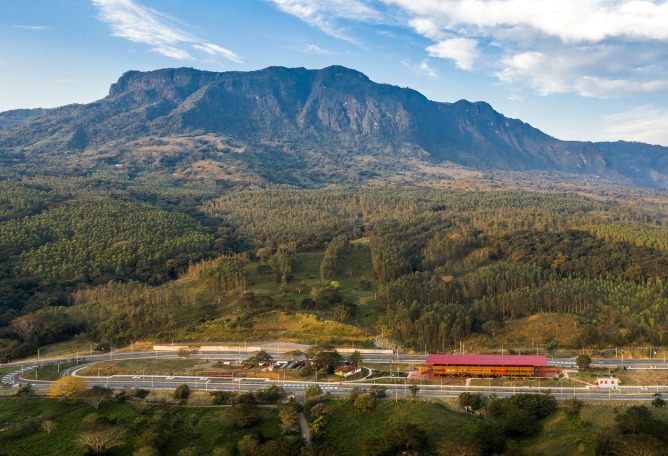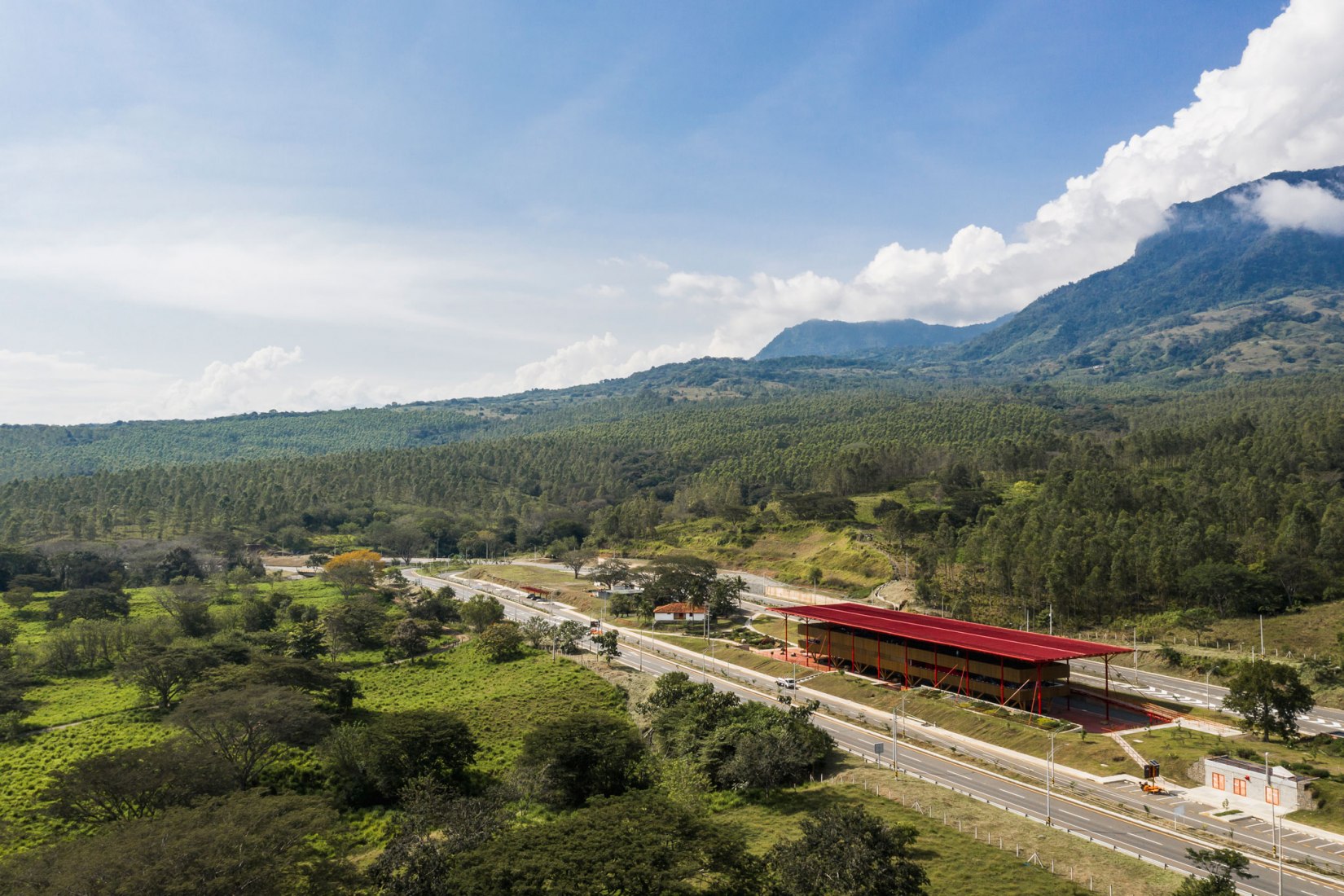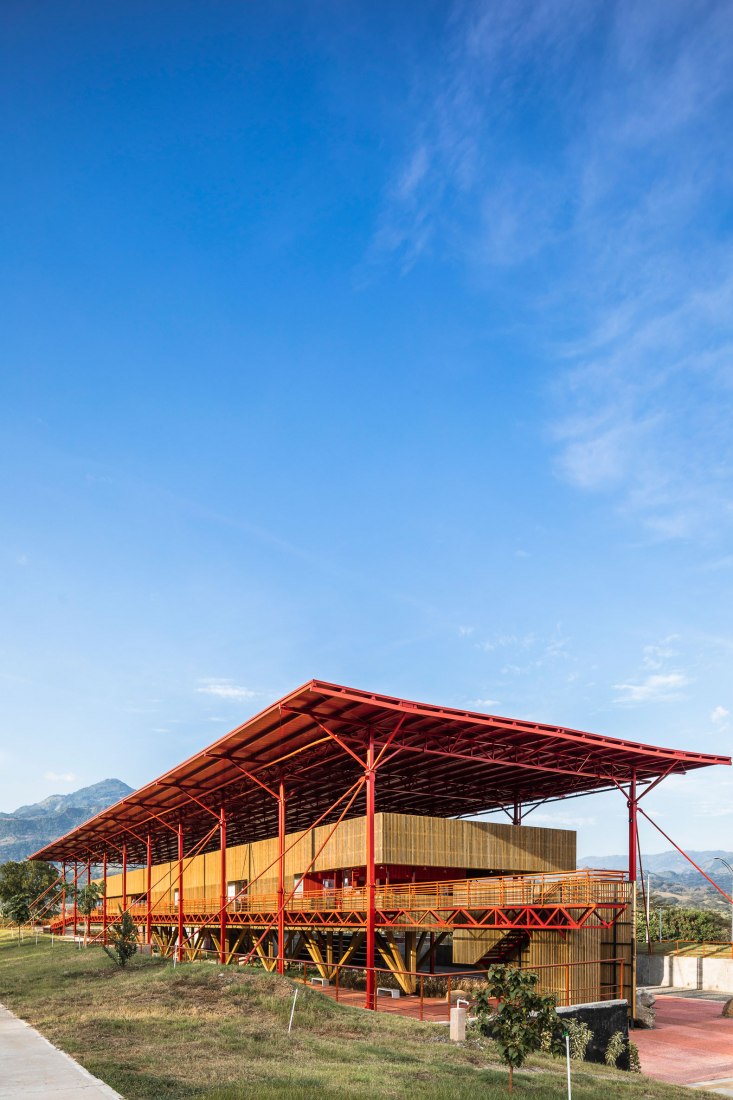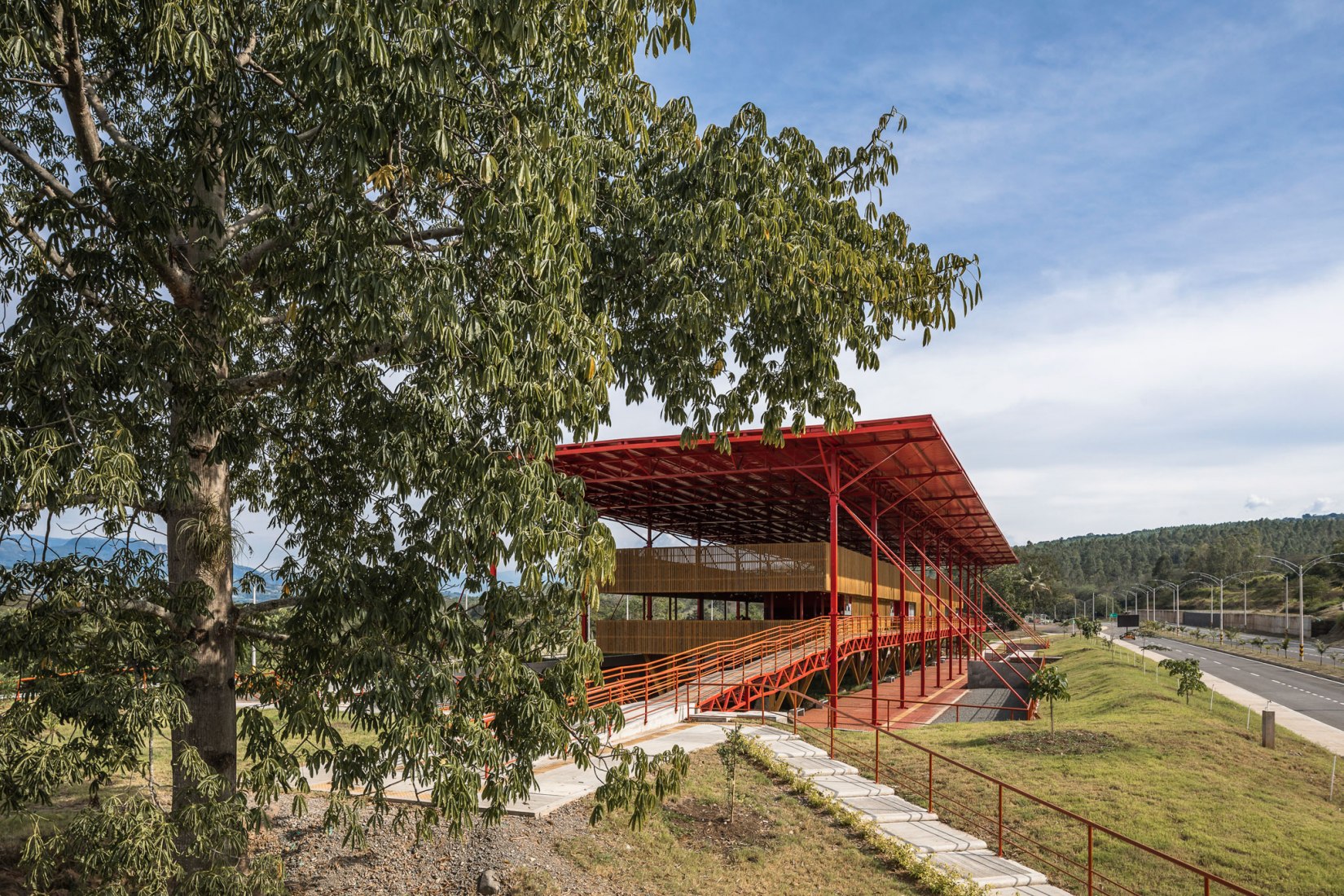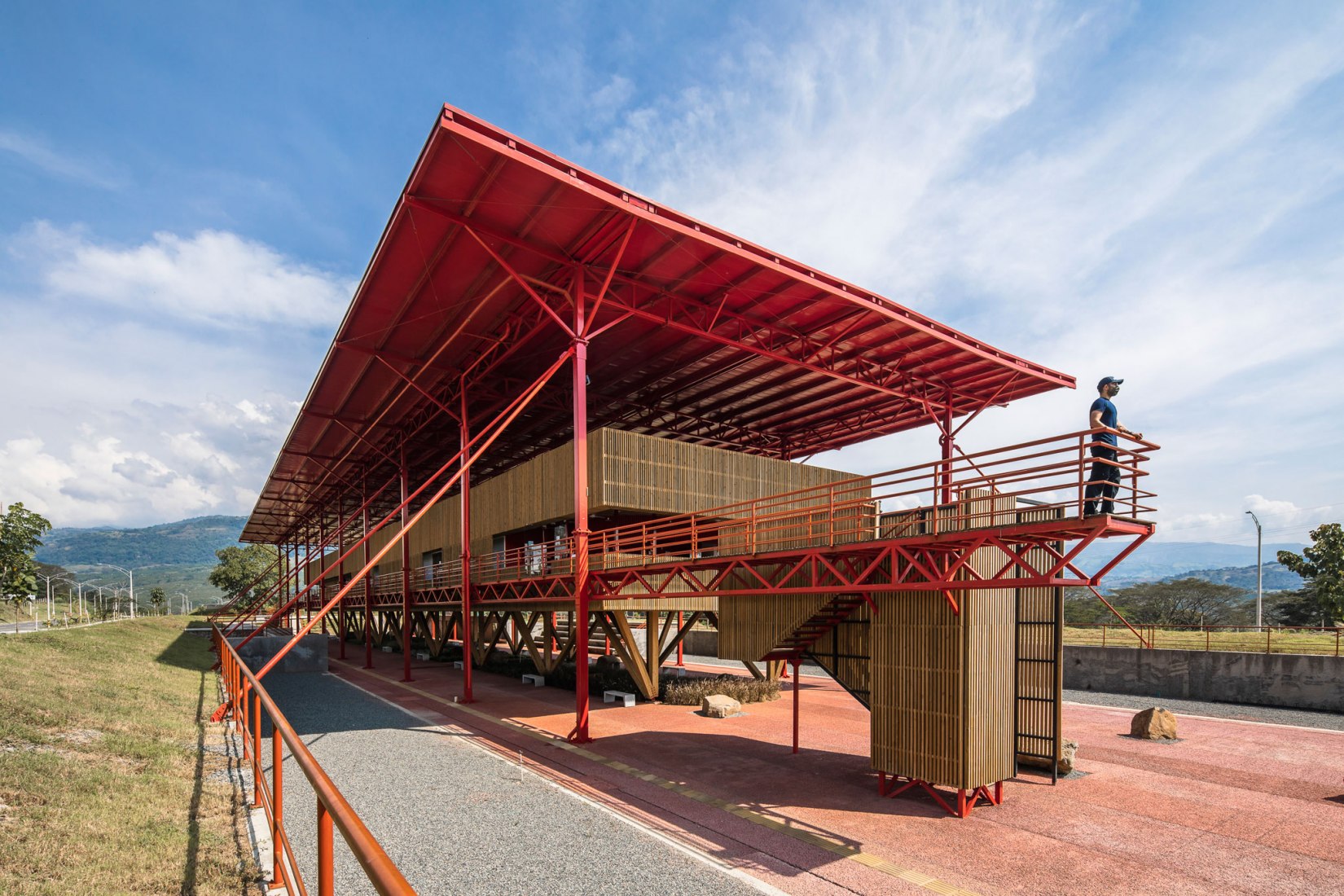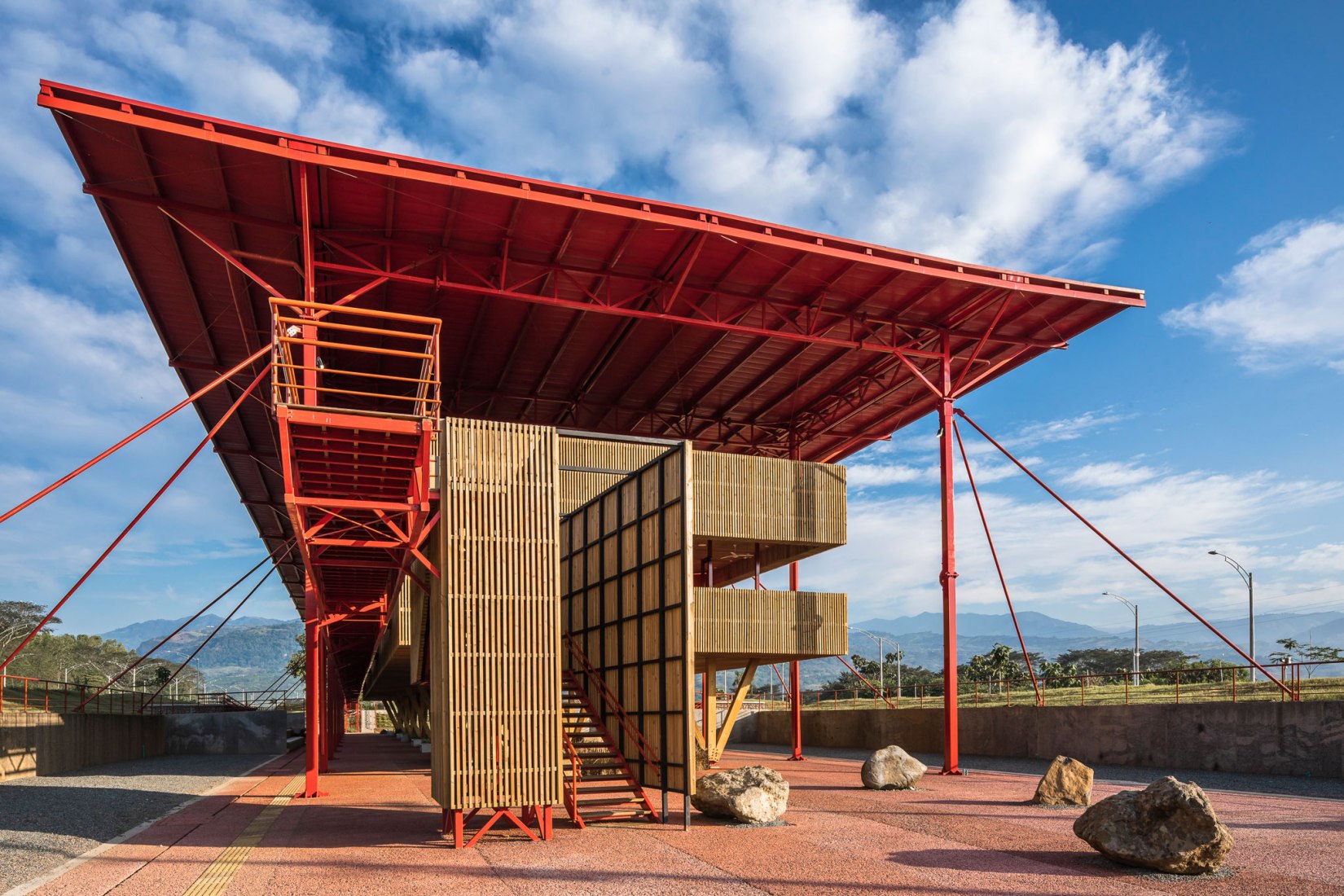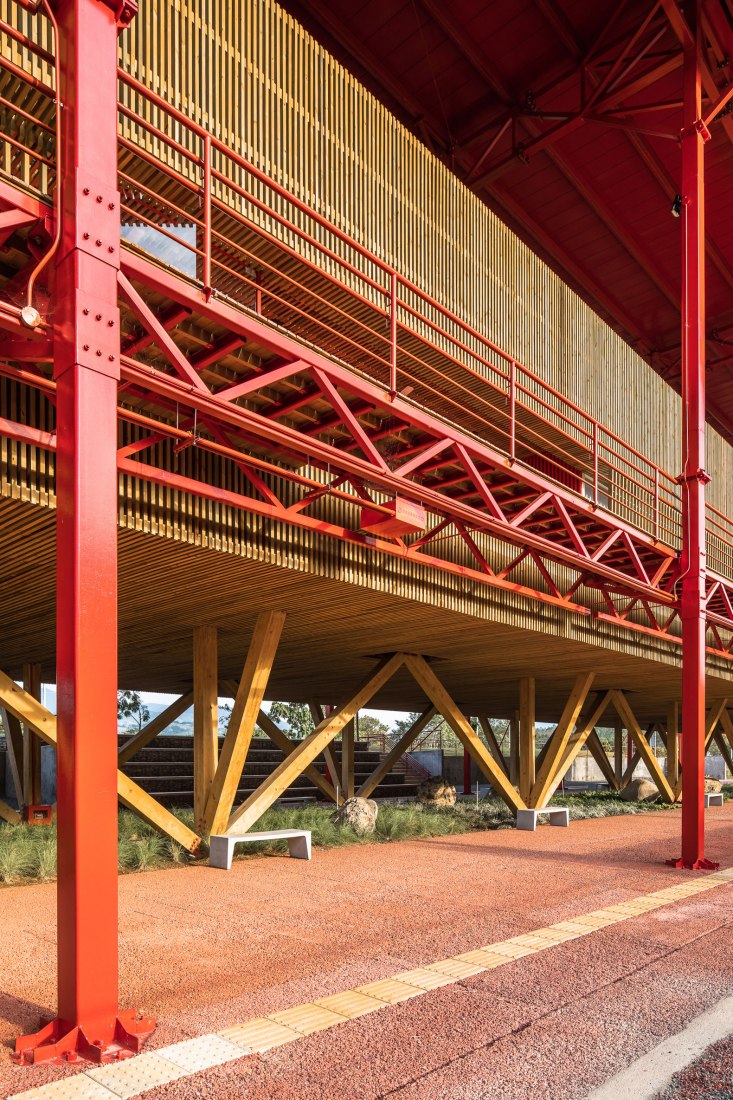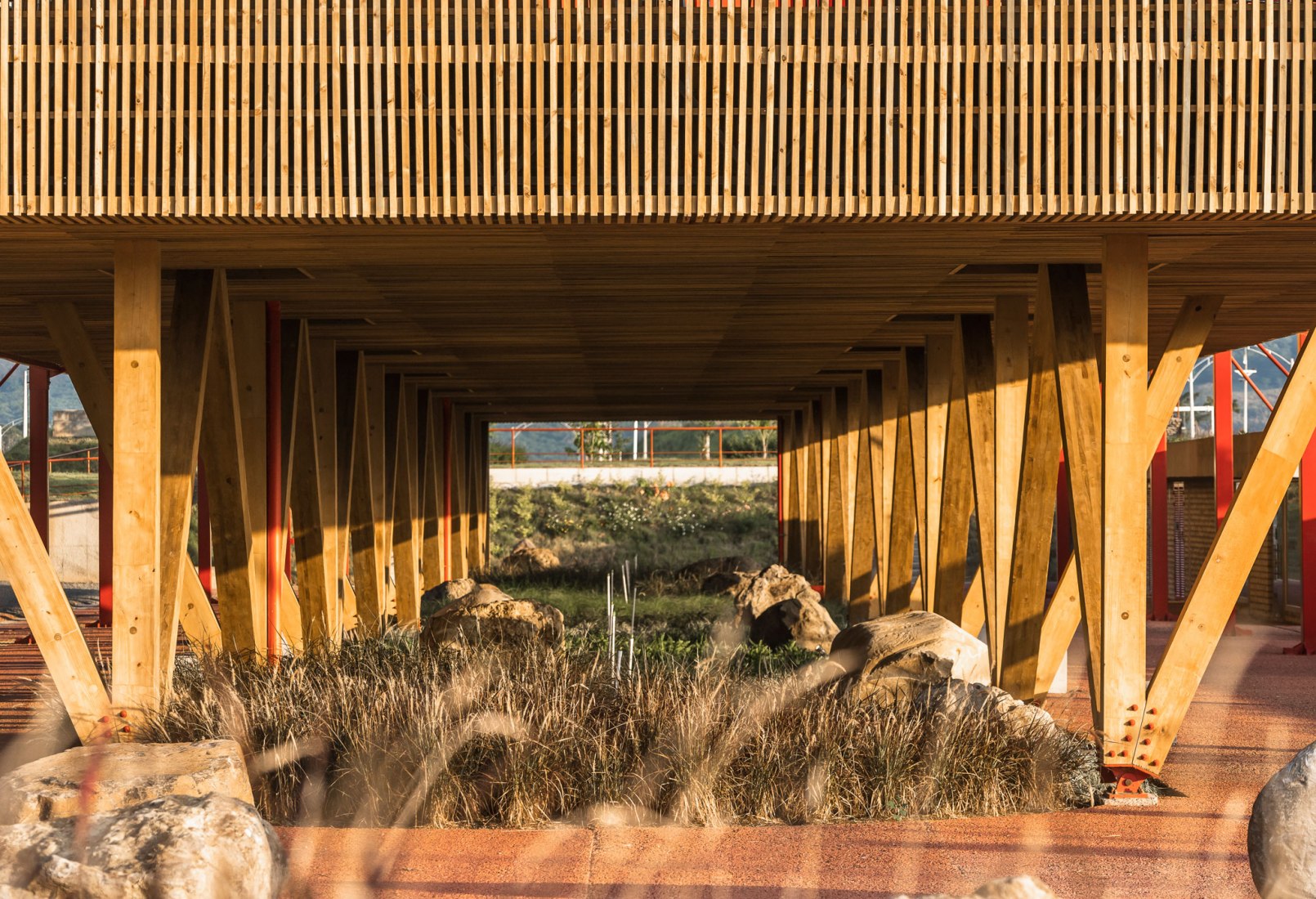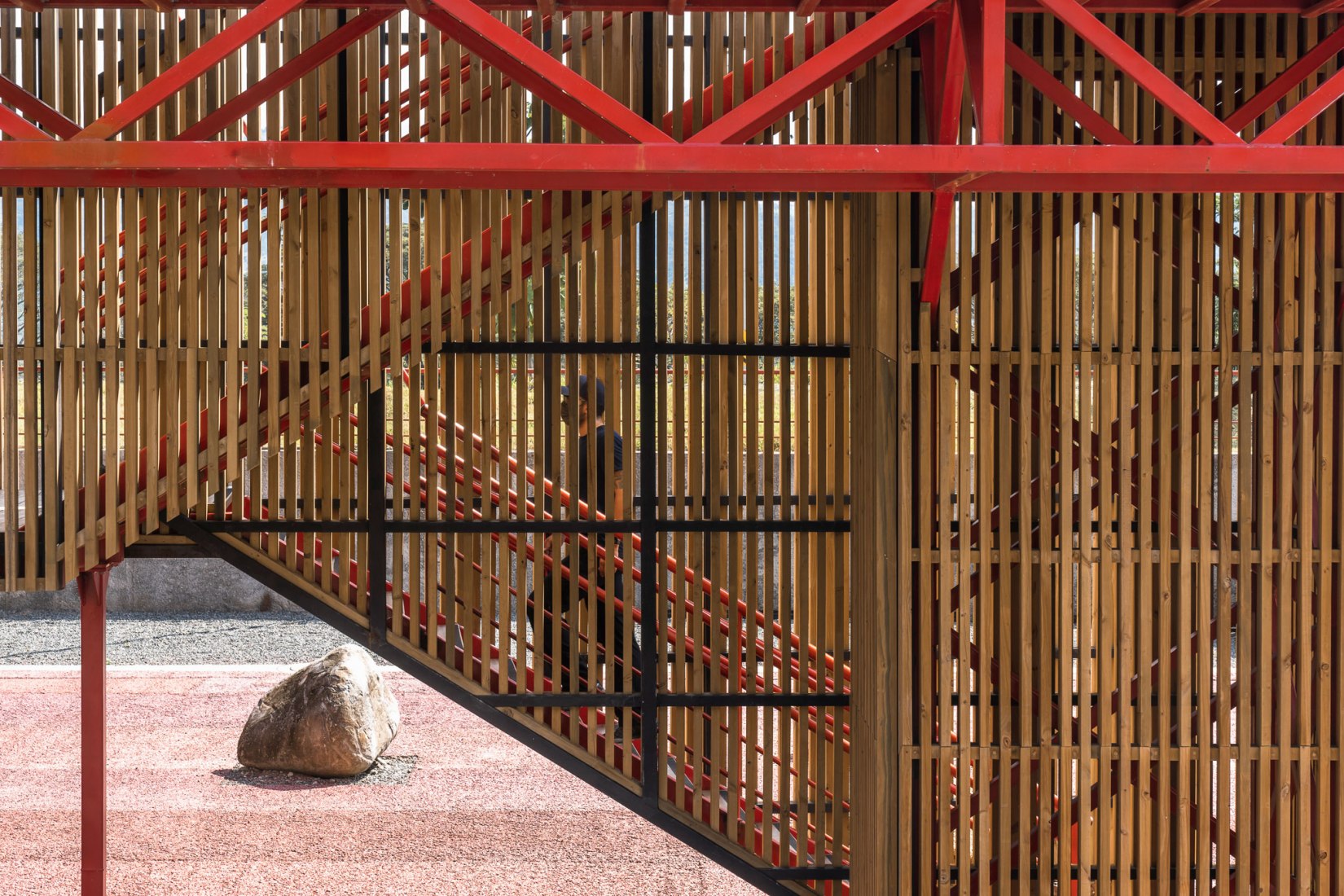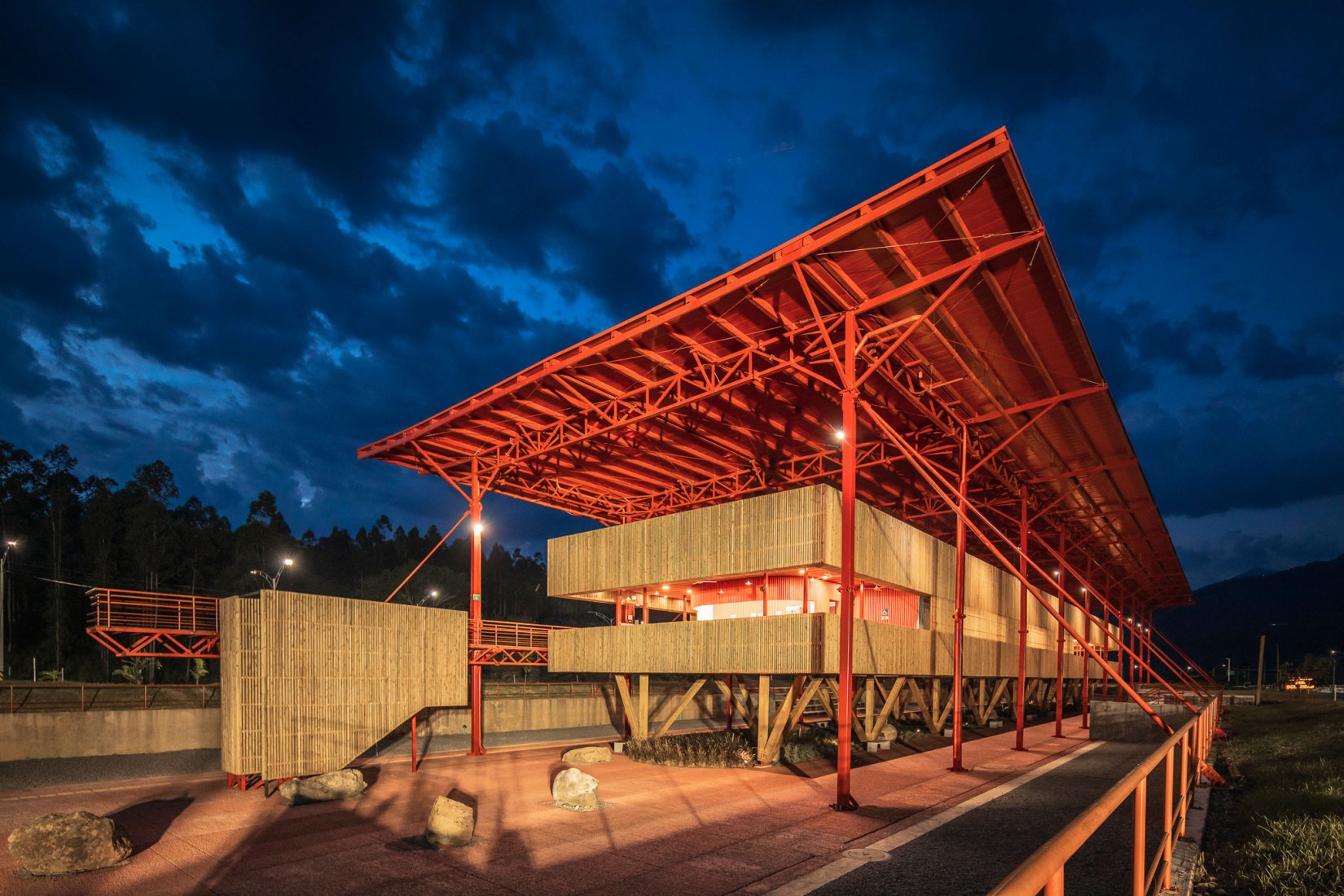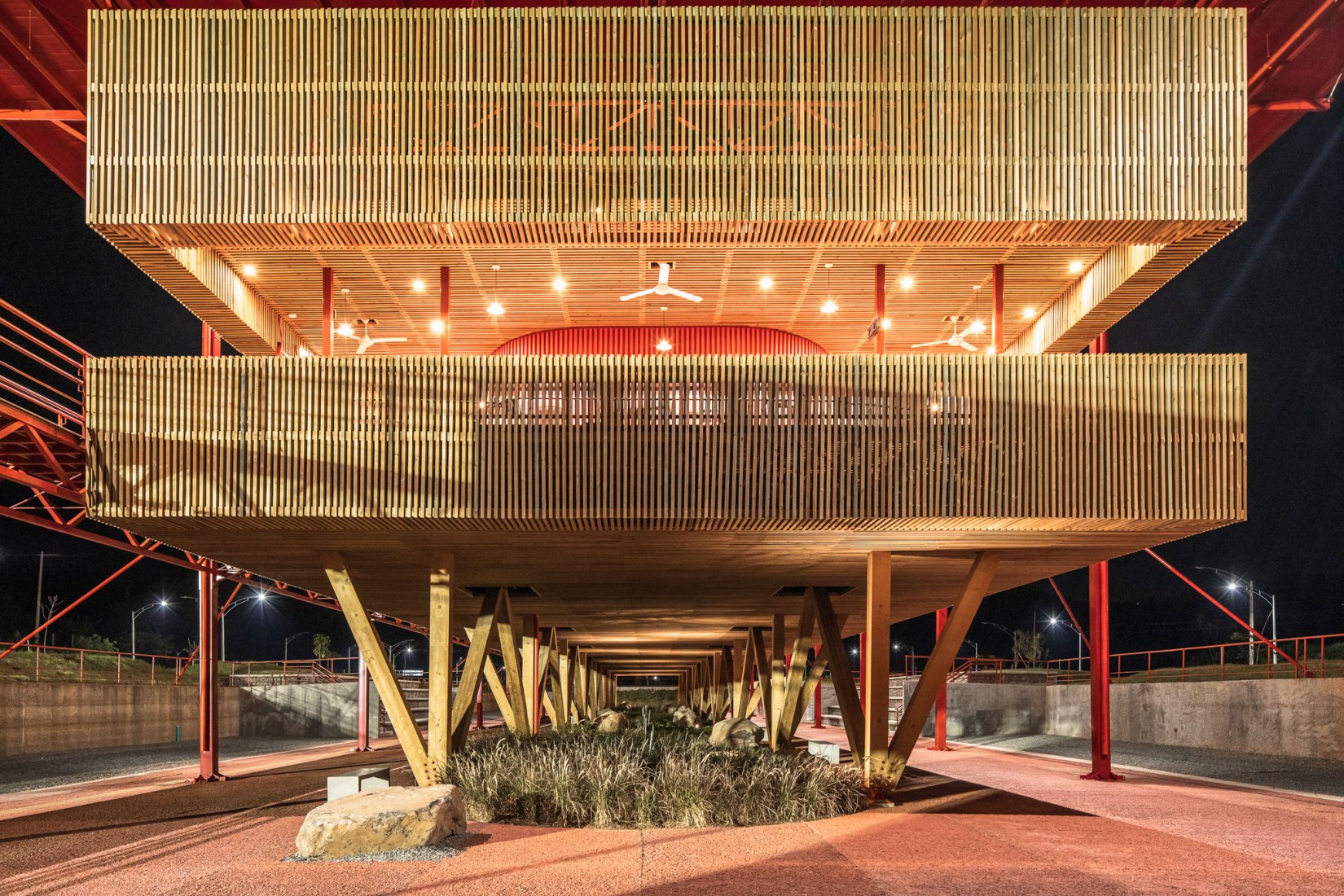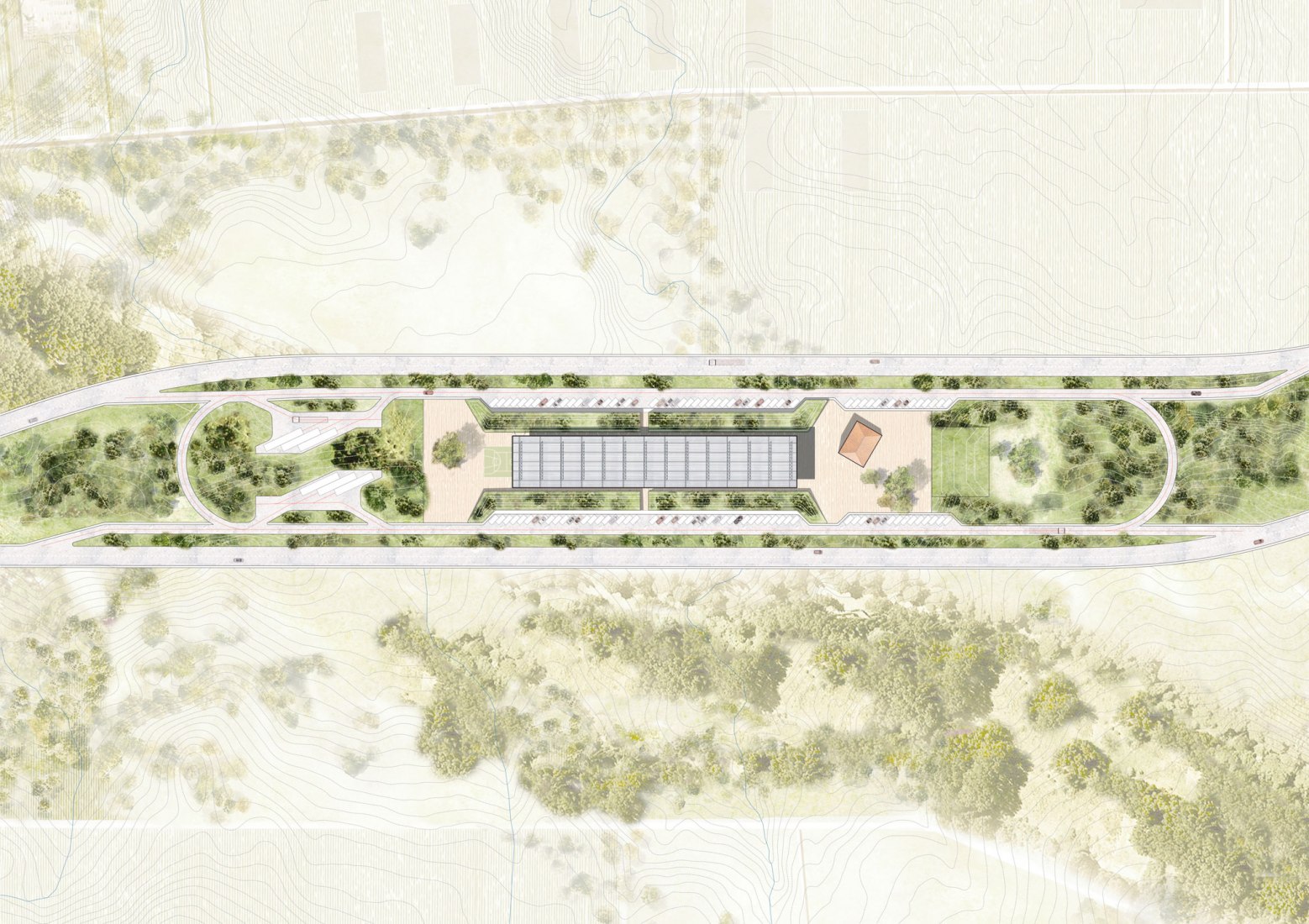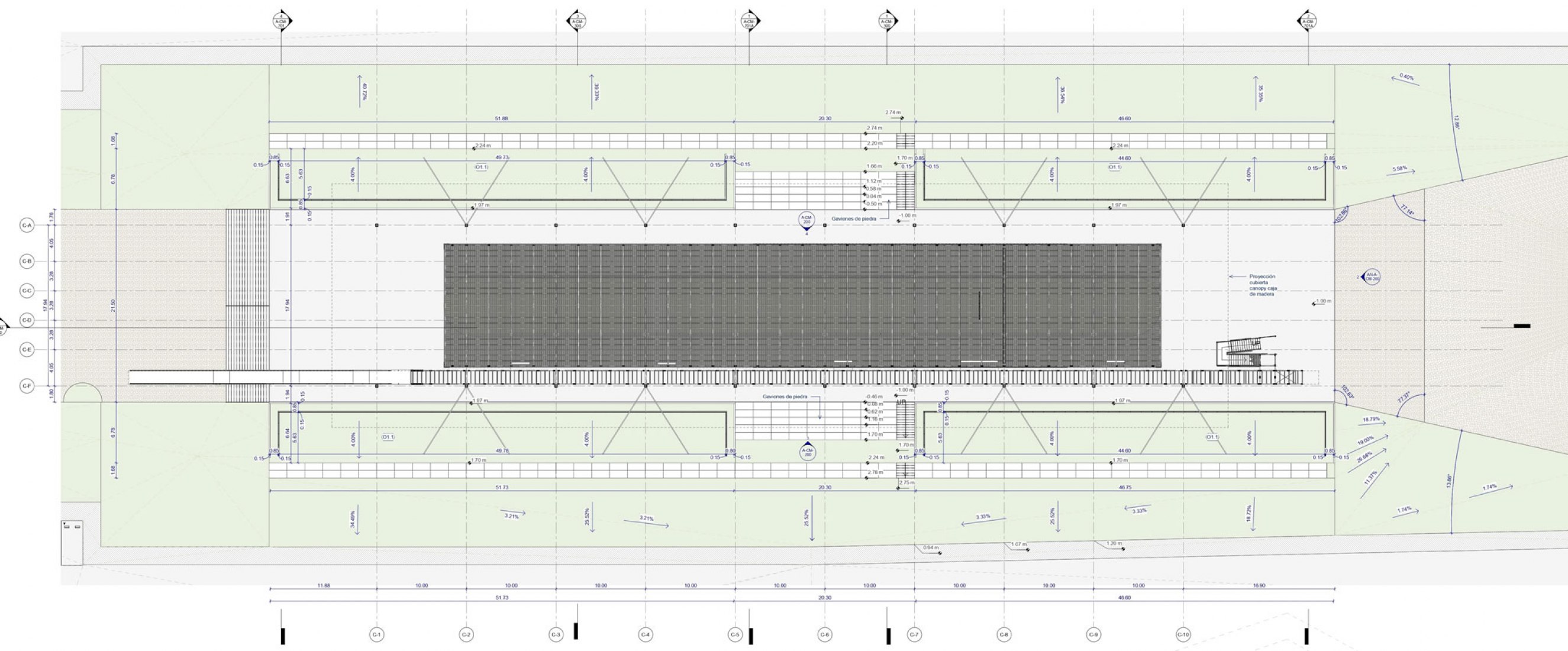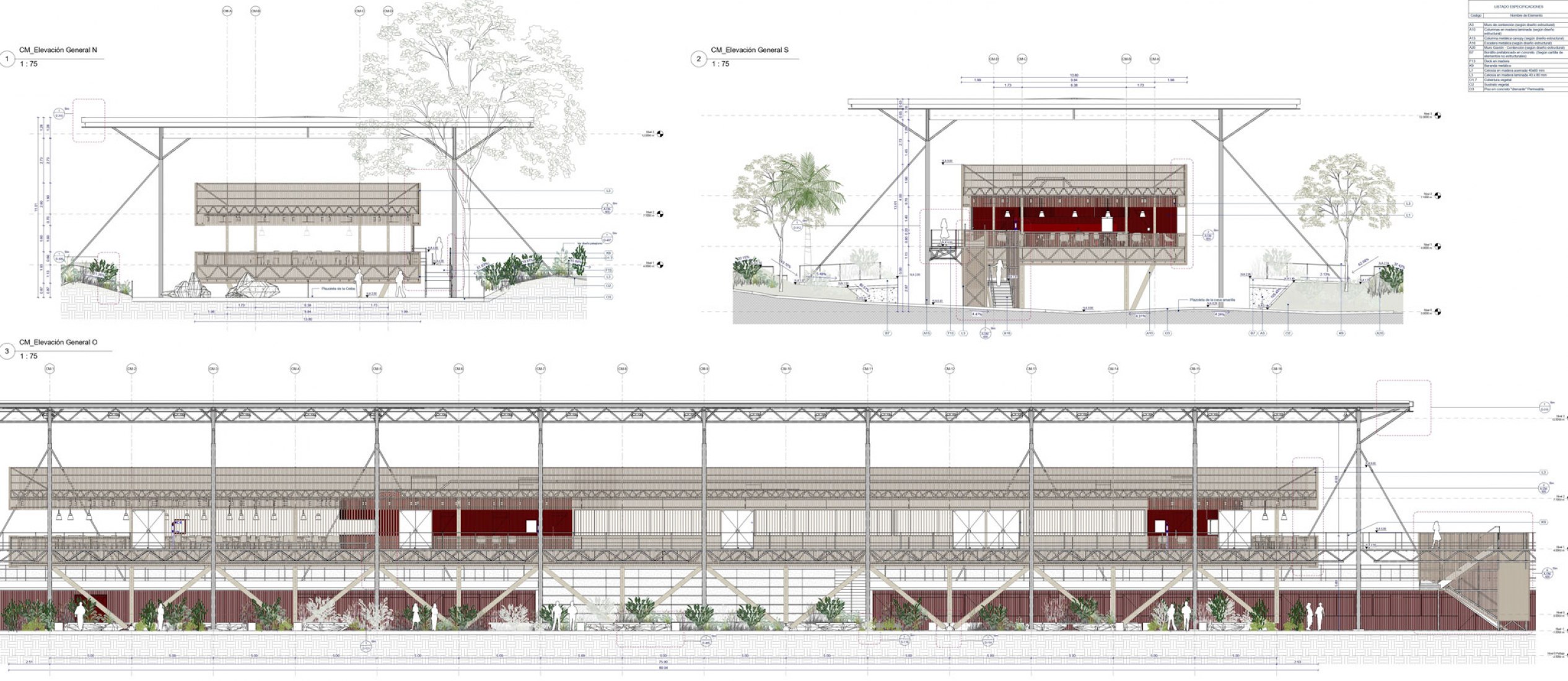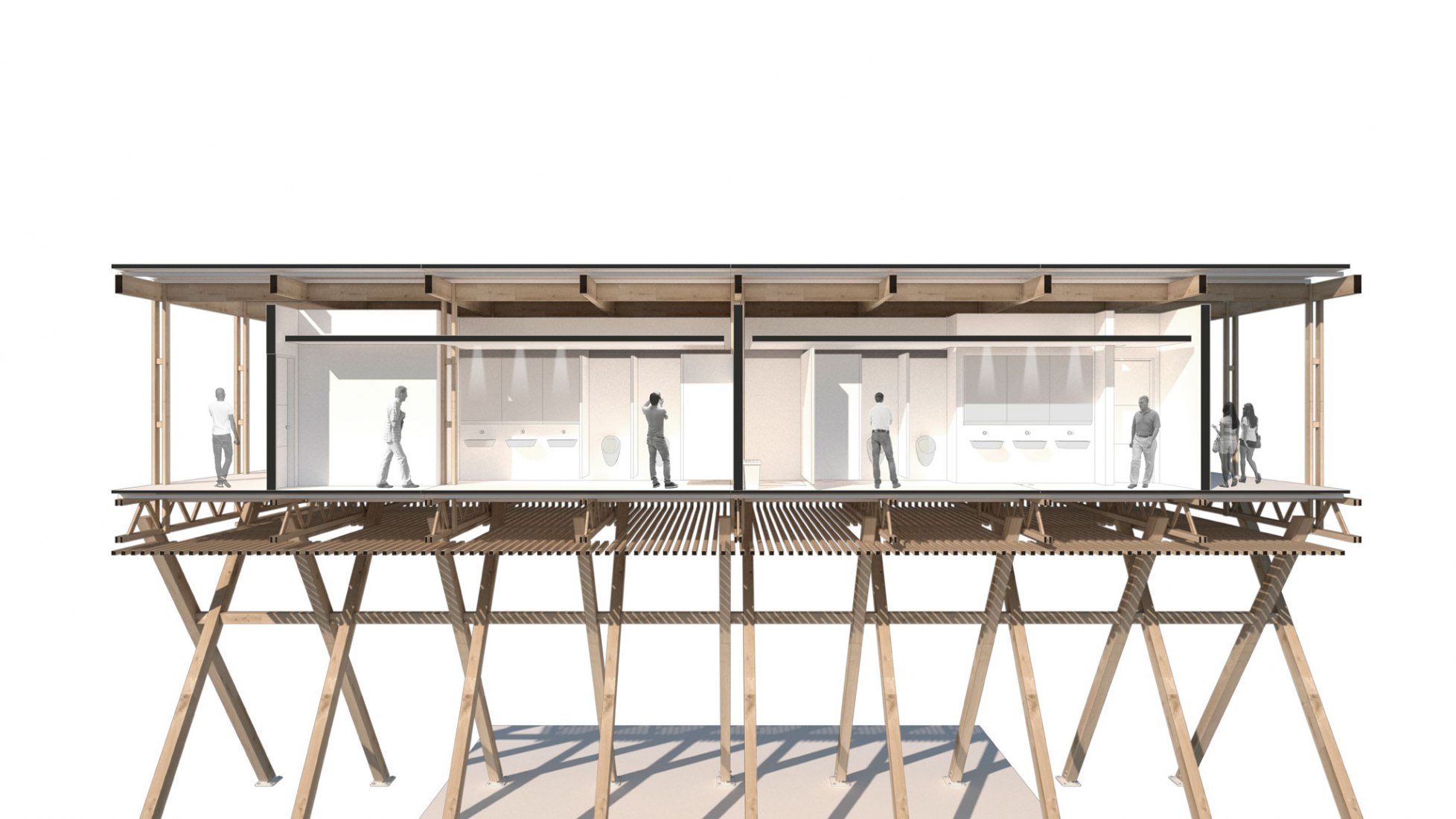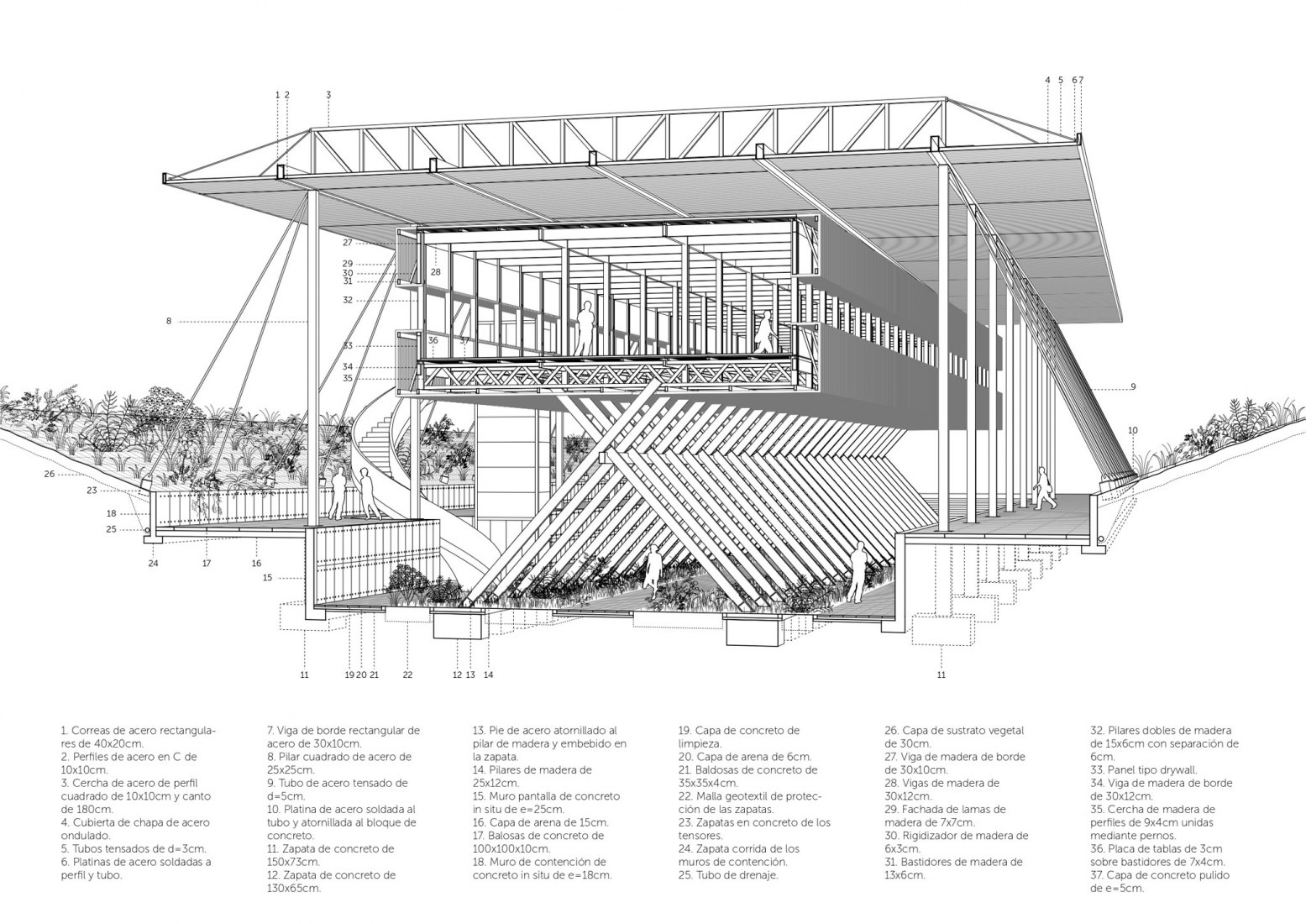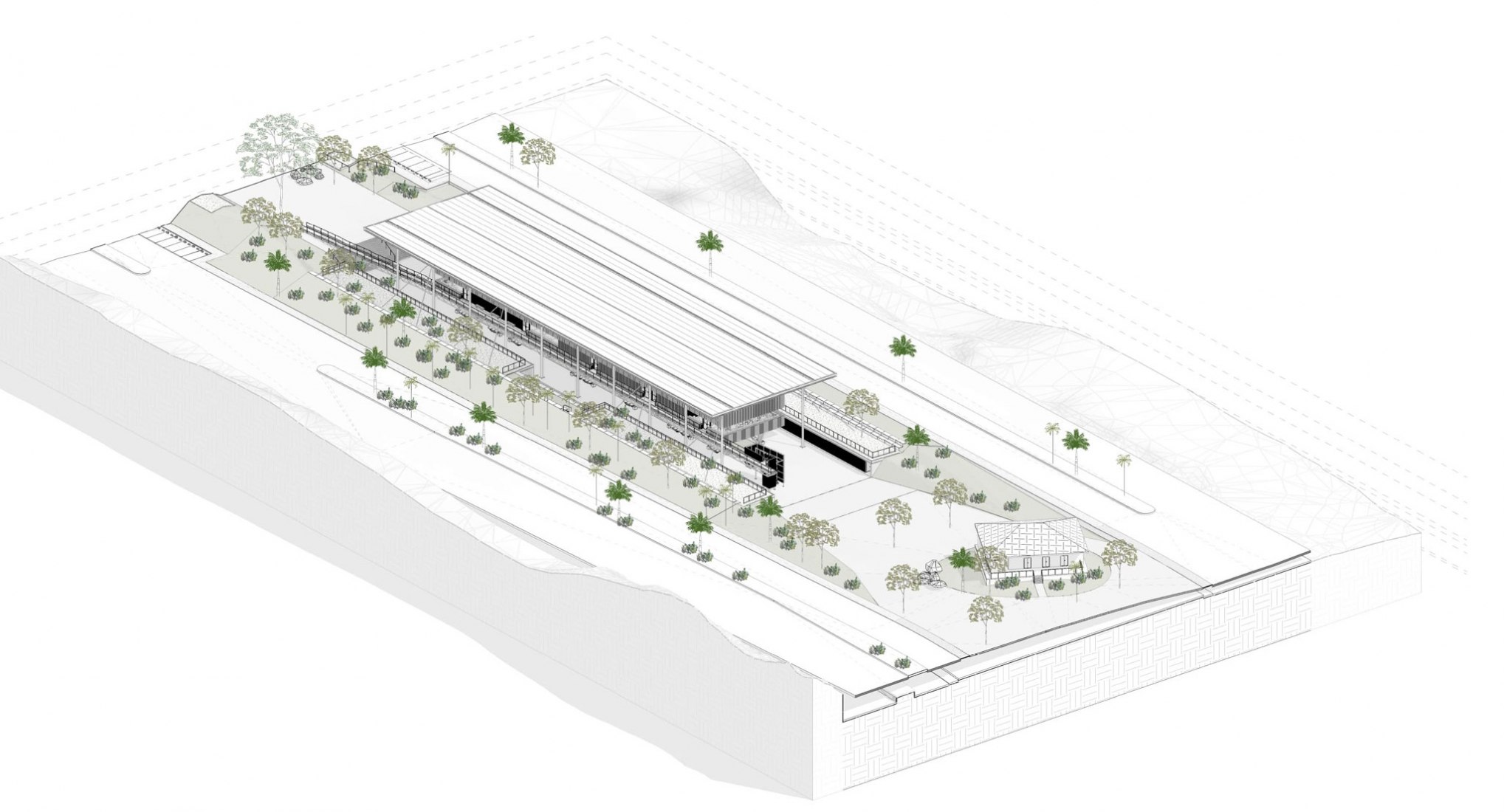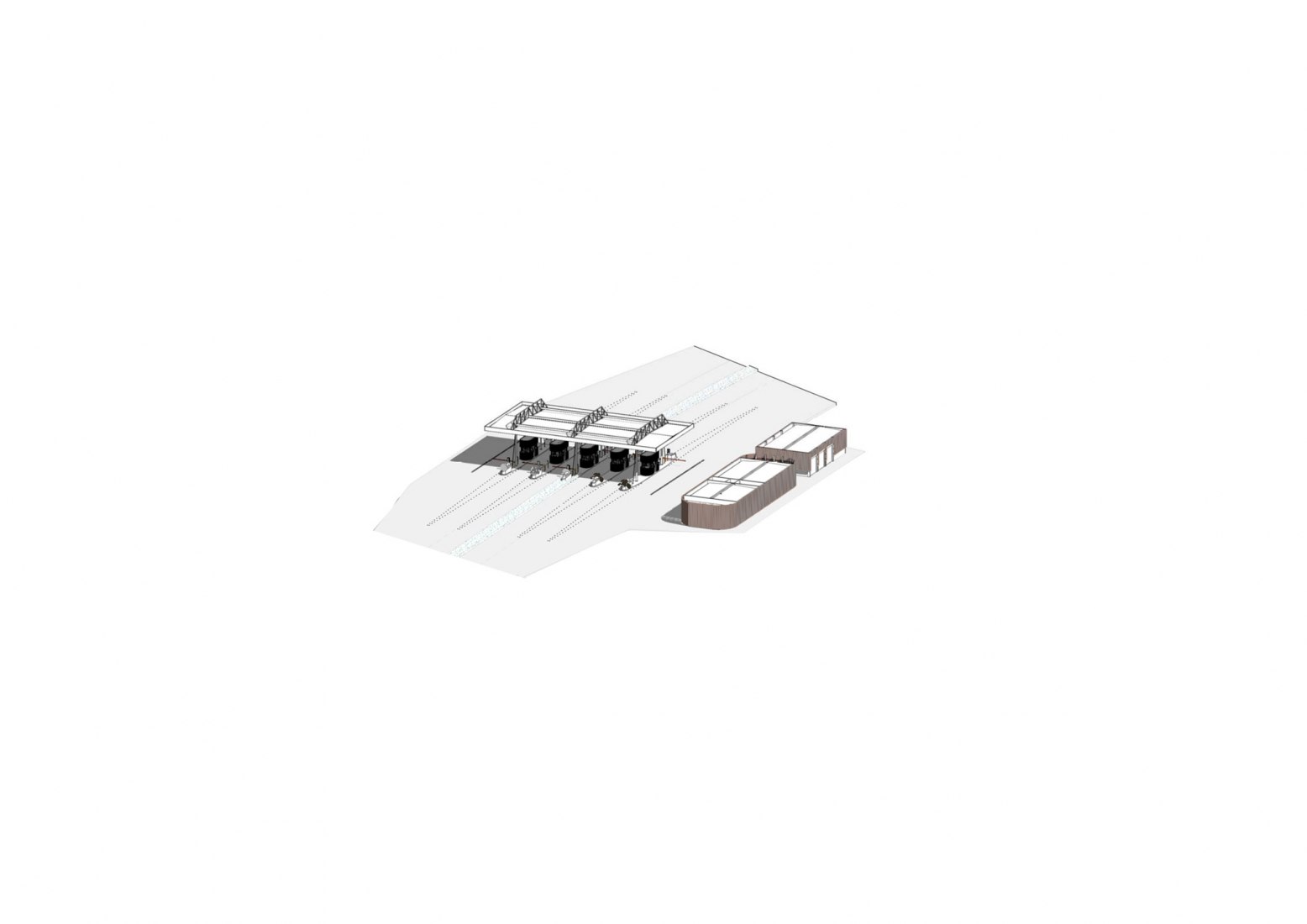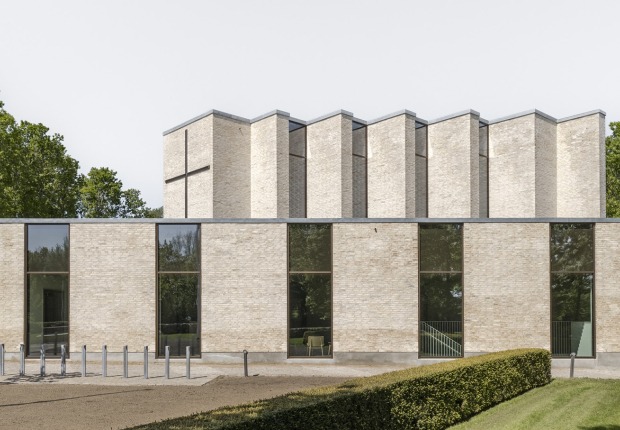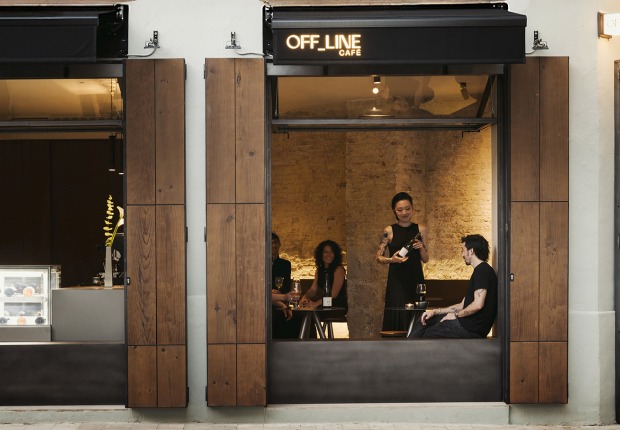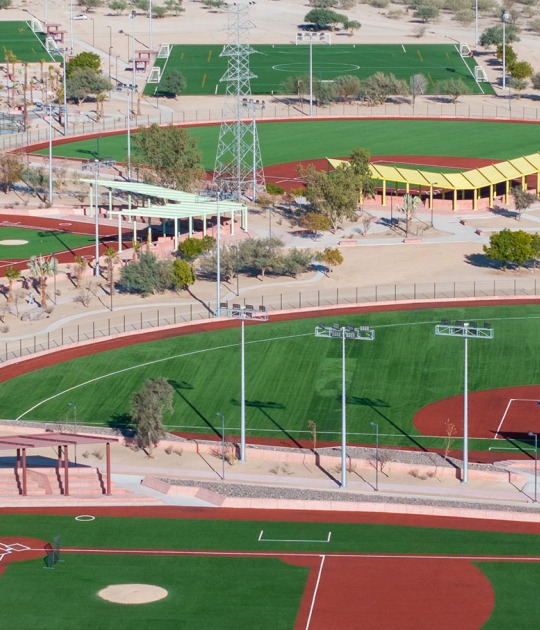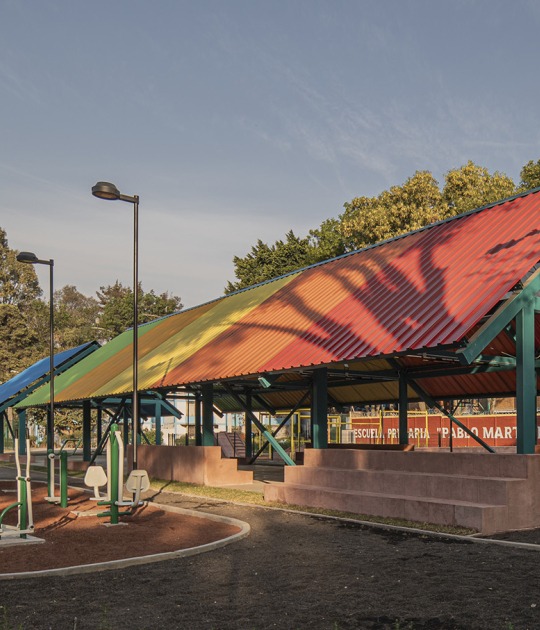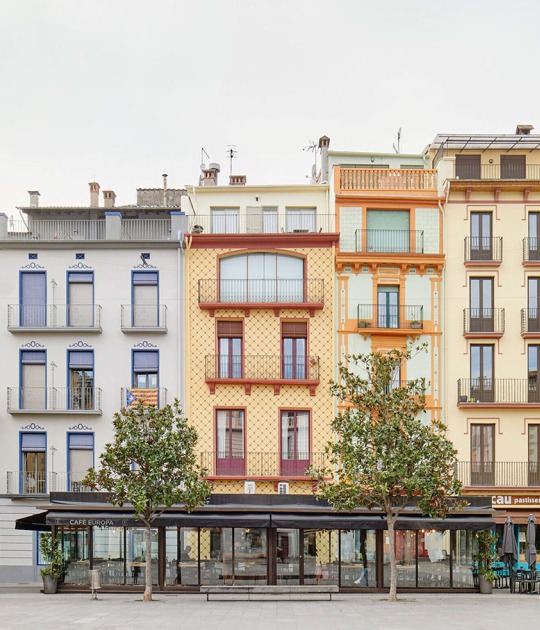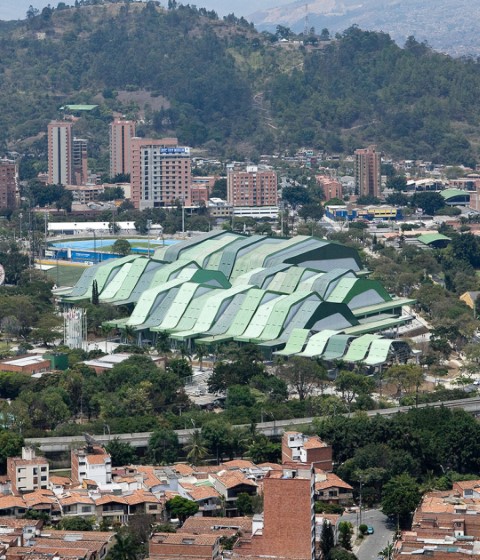That is why the architects decided to create a landscape landmark using two structures inspired by local architecture: a red metal roof, the color of the peasant houses in the area, and a wooden body raised from the ground by means of stilts to create two different areas.
The complex is not only limited to the building but extends throughout the entire plot, creating a small forest of tropical trees that shade some sport courts that complete the program.
Description of project by El Equipo Mazzanti
General objectives of the initiative
In recent years, a series of highways have been developed in Colombia that seeks to unify the country, characterized by mountainous geography and difficult access.
This hard infrastructure is characterized by connecting important ports and cities, passing through regions that are very little served by the State and of great poverty; The communities these highways pass through don't get much more than connectivity.
For this reason, and at the initiative of the Mazzanti Team and the Odinsa company, a new type of communications infrastructure and highway operations was presented to the Colombian State.
These CCO centers generally only served as buildings connected to highways and their operation; without any kind of relationship with the surrounding communities. The proposal included multiplying the use of the CCO control and communications buildings with training classrooms, a product collection center, marketplace for the region's products, open-air cinema and sports fields, making CCOs stop being just structures designed for efficiency and become places for community building and improvement of the living conditions of the peasants of the region.
The main question is: How to go from an infrastructure focused on production and optimization, to an infrastructure that focuses on the support of human and social capital and that, in turn, is capable of generating public-private alliances for its programming and sustainability?
For example: How to go from a road infrastructure designed exclusively to meet logistical objectives (AB connection) to a network of productive and sustainable corridors, with the capacity to: mitigate climate change, adapt to the geographical, social, and cultural virtues of its context, and generate economic and social development.
"Traditionally, road infrastructure has been used to reinforce physical connectivity to improve the functioning of markets, or with a narrow focus, such as connecting mines or ports ... But corridors can be leveraged for more planning initiatives. smart, aimed at improving agricultural opportunities, achieving explicit goals such as rural job creation, environmental objectives and catalyzing better governance along value chains, all of which are necessary to stimulate inclusive and sustainable growth in the world Developing".
This project served as a seed for the Colombian government to convert all of the new CCO infrastructures to community centers in the rural regions of Colombia. All new highways in Colombia must develop community centers in accordance with the cultural and climatic characteristics of the regions through which they pass.
This vision is a potential for high investments in infrastructure to respond not only to logistics and competitiveness objectives but also to the growing need to produce local development and capital in the rural contexts of our society.
The project
CCO is a road service center, whose function is to generate a meeting place for road users. It is conceived as a center where there is points of recreation, rest and tourist information in the area.
The project seeks to have a high social impact at the regional level, seeking to become a recognizable urban landmark in the area. This aims to promote the tourist development of La Pintada, which is being projected today as a seaside resort for visitors to Medellín.
The project uses the typology of coffee drying processors, organizing itself through two main bodies; The first is a low-cost metal roof that helps protect architectural programs from the inclement sun; painted red, like the peasant houses of the region.
The second body of wooden slats is made up of a high volume of the natural terrain by piles where the restaurants, offices, and some training classrooms are located. Under the main volume, there are other training rooms, premises for the region's products, storage places, and the shady market. The topography of the plot is excavated to isolate the public areas with slopes from vehicle traffic and their slopes to generate theaters for public events and an open-air cinema.
Throughout the plot, sports fields are organized and large tropical trees were planted, generating a large forest. In the extreme north, a nursery was also located where trees from the region will be planted for reforestation.
The project's concept has as its main intention the design of a social architecture capable of providing flexibility and diversity in the uses for its users, highlighting, in turn, the most representative elements and materials of Antioquia colonial architecture, as well as of the diverse constructive traditions of the region.
The architecture of the "floating box" that houses the social program, seeks to highlight the traditional woodworking in the region. The shape of the structure aims to evoke the drying of the slats in the region, as well as the envelope of the façade, seeks to represent the framework of the mat used in Antioquia colonial houses


